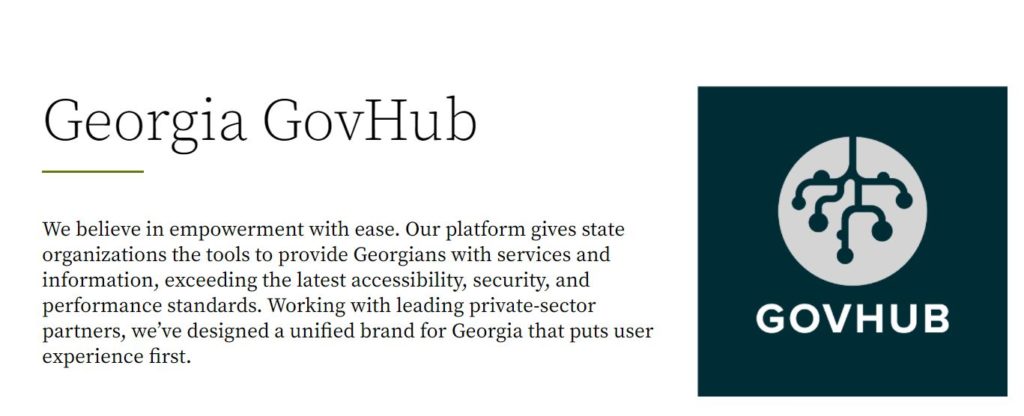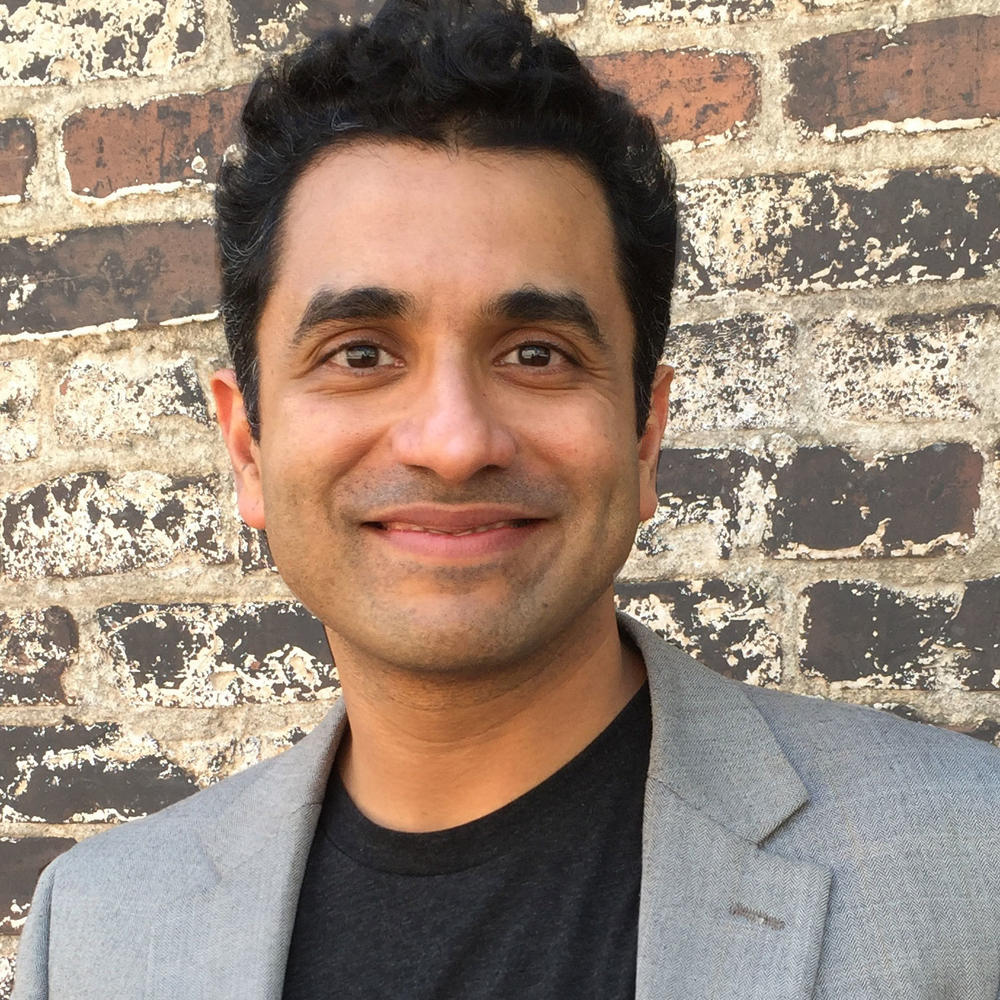
Georgia’s Office of Digital Services (DSGa) is responsible for supporting and enhancing digital experience across state agency websites. This is no small feat. The state of Georgia has more than 100 websites that provide a wide range of services to the state’s 10 million residents.
Georgia’s Chief Digital Officer Nikhil Deshpande and the DSGa team have been leading an initiative to revamp websites hosted on GovHub, the state’s official content management system built with Drupal 8. But it is not just about the technology changes. Deshpande explains that the move to Drupal 8 also involved a significant paradigm shift in terms of how they think about and present content to constituents.
In this interview, Deshpande discusses the role DSGa plays, how the office has overhauled content management for the state of Georgia, and what’s on their roadmap for the future.
What is the role of the Office of Digital Services?
DESHPANDE: The Office of Digital Services is an office within the Georgia Technology Authority, a state agency responsible for providing technology leadership to the state of Georgia. The DSGa team works with state agencies and elected officials to make sure that the constituents of our state have a frictionless experience in consuming information and services.
Every state agency is responsible for providing a certain service for our constituents. Each agency is the subject matter expert for their individual topic, while engaging with IT teams, external contractors or companies. Most times, there is a missing element of actually designing the experience of how we are delivering a service. What Digital Services offers is a bird’s eye view on how services are delivered and if they align with the expectations of our constituents. We try to bring a certain level of consistency, which automatically enhances the user experience. As a constituent, you don’t have to relearn every time you interact with a different state department.
We try to take away the complexity of what a constituent experiences when interacting with government. We are there to represent the user when design decisions and development decisions are made.
Georgia is one of the first few states to have this particular office. It is not the norm everywhere. We modeled it after the United States Digital Service. It is an outfit that came out of White House. We also took some lessons learned from gov.UK, which has its own digital services. The whole idea was to look at the complexity of government information and try to make the experience as easy and intuitive as possible. Depending on how certain governments are structured, you want to place this office in a strategic place where you are supported by the right people and you also are positioned to engage with agencies that truly have a high impact on service delivery.
You have led the initiative to move all Georgia government websites to a new web content management platform. This involved transitioning to an enterprise open-source web-publishing platform. What was your vision and goal in making this move?
DESHPANDE: It is a two-step approach. The first one was to create an environment for the employees so they can do their jobs a lot easier than what the previous content management systems and processes allowed. The previous system that I inherited was very complicated, and content managers had to find all sorts of shortcuts so they could just get around the system to quickly do whatever they wanted to do. Like any product person will tell you, make it easy for people to do the right thing, and they automatically will start doing the right thing. By moving to an open-source system, we can actually control and design it for the way our content managers use it.
With our more recent update to the newer version of Drupal (Drupal 8), we offered a significant paradigm shift in content organization and management. In the previous world, our websites represented the organization and in the new world our websites represent the services our organizations support. So the focus now is very service driven. If you were to draw a content association chart, the service is at the center of it and every content piece spawns off the service. The content item could be anything that supports that service, be it a person’s contact, an office, a department, related documents, or narrative information, everything is wrapped around that service.
Changing content management systems can be a massive undertaking when it comes to content. How did you approach the content migration? Did you use a content modeling process to help define the new content types?
DESHPANDE: When designing and architecting GovHub, we engaged with a content and development partner. They interviewed our agency content managers and also looked at the kind of content we are delivering. After understanding how content is planned and delivered, they designed new content models. They created different content types that we are going to be serving and did a deep dive into the structure of every content type.
While designing our content model, we compared notes with some other states such as the commonwealth of Massachusetts and North Carolina who are predominantly Drupal users. Massachusetts had already been on Drupal 8 before we did. It was helpful to compare notes in terms of what their content models looked like. If there was a gap that was identified we could learn from it. It was an extensive exercise as far as content modeling and it was a project that was a big part of our pre-development efforts. Because unless we finalized and had clarity on how we wanted to deal with content, there was no point in starting the development effort.
At the end of the day, content is one of our key products. Information is something that people come to us for and we had to build the right structure to be able to serve that. It is not just for humans anymore, now we have to make content available for machines as well. So we wanted to make sure that when we built out the models, they were something that machines could read and understand.
Has the platform move changed how DSGa thinks about web content? Have you introduced new standards or processes to help future proof content?
DESHPANDE: About 3 years ago we worked on a pilot project for Alexa. The idea was that we need to be ready for newer channels that are going to show up. Our content is not just for websites anymore. When you create content you are purely creating content and not webpages. But then how do you create reusable content that can also be relevant for some of the “non-web” channels that don’t exist today? Working with one of our development partners, we created an Alexa skill and connected it to Georgia.gov. The goal was to leverage the same content that resided on georgia.gov and not create duplicate content just for Alexa. Our intention was to have Georgia.gov as the single source of truth. So be it our website or be it a conversational interface, it still draws content from a common content pool.
The behaviors for web content and conversational content consumption are different. Conversation interfaces will check for validation to confirm content accuracy, so we had to break long pages into bite-size content pieces. This approach forced us to change the way we served content on our website. What we realized by the end of that project was that in trying to make content tuned for voice delivery, we ended up making content more effective for the web. Our content team made it simpler and shorter by breaking into consumable chunks. Our legacy content was web-friendly but writing for a conversational interface made it simpler. When we engineered and architected GovHub, we kept content fluidity as a goal. Even though websites are our primary way of delivering information, we need to be future-ready. Now you don’t need a special Alexa skill to read Georgia.gov content because Alexa or Google Home automatically reads information from Georgia.gov or GovHub hosted websites. The way we changed and modified our content made it machine visible and readable.
Georgia government agencies have to reach constituents in multiple ways. How does the new platform support multichannel delivery?
DESHPANDE: The new platform is engineered with an intent to reduce duplication of content. Today constituents land on a page a search engine points them to. It could be an agency page or a Georgia.gov page. Our goal is to make sure the content presented is accurate in both places.
Earlier, the reliance was on people to notify someone that something has changed. Creating this workflow has helped. And we are still implementing all of these changes. My favorite principle is the 80/20 rule. We deal with a lot of content and we know it is impossible to always be pruning and having the perfect website. But if you just focus on what content serves 80% of your users. It could be 10%, 15%, or 20% of your website. Start from there and then keep chasing down the longtail. And that is what we have been doing.
On Georgia.gov we are working on the content that serves that 80% of users and connecting that content with agencies. And we address newer channels as they emerge. The most recent example is chatbot, which especially during COVID when traffic is beyond comparison to pre-COVID times. So chatbot became critical to start answering questions because our call centers couldn’t keep up with the volume. What we did is we created these chatbots and plugged them on websites. The long-term goal is to connect the bot to a certain set of FAQs that can also be shown on the website. Our initial implementation is more of an MVP for the bot. The ideal future state will be to draw that content from a single source of truth so whenever something is updated the bot is already updated.
What’s next for DSGa?
DESHPANDE: On the immediate horizon is to work on content enablement across agencies. Now every agency is on Drupal 8. So they are on a very sophisticated system and they also have other tools to gauge what digital success looks like. It actually gives them a score. Most agencies now are responding to this gamification of how everyone is faring. The whole idea is to make sure every site does really well as far as their search engine optimization is concerned, where 65% of our traffic comes from. So everything we do we are conscious about that. We are gauging how well a site does when it comes to search engines and from a quality perspective. Typos, broken links, we are trying to address those issues.
Accessibility is a big deal. We want to make sure all of our web properties are accessible. From a development perspective we built the system to be WCAG 2.0 AA compliant, but content managers also have to do certain things to keep the content accessible. So we want to spend the next several months making sure that level of maturity is there. That requires us training our content managers.
And then we need to mature our chatbot or any other channel that we decide to have it work alongside our content management system.
The long-term goal is to focus our efforts on the transactional applications. From an end-user perspective, even if they start at Google and go to the home page or a second or third level page and get to a transactional application, until the end they really should feel a seamless technology experience.
We also have a design system we created and knowing that not everything is powered by the same technology, what a design system does is put an abstraction layer between the user and the technology by creating these intuitive design patterns that build consistency across different digital properties. Regardless if a user is on a website run by Drupal or not, or if they are on a transactional application, the design system enables that consistency of experience.
Events, Resources, + More
The Ultimate Guide to End-to-End Content
Discover why + how an end-to-end approach is critical in the age of AI with this comprehensive white paper.
The Content Advantage Book
The much-anticipated third edition of the highly rated book by Colleen Jones is available at book retailers worldwide. Learn more!
20 Signs of a Content Problem in a High-Stakes Initiative
Use this white paper to diagnose the problem so you can achieve the right solution faster.
Upskill with Content Science Academy
Training for modern content roles through on-demand certifications + courses or live workshops.








Comments
We invite you to share your perspective in a constructive way. To comment, please sign in or register. Our moderating team will review all comments and may edit them for clarity. Our team also may delete comments that are off-topic or disrespectful. All postings become the property of
Content Science Review.